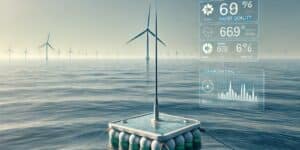Offshore oil and gas exploration, offshore wind farms, offshore clean energy projects (for example tidal energy), marine infrastructure development… Offshore projects are typically extensive undertakings that involve multiple stakeholders, demand substantial resources, and require months or even years to plan and execute.
These large-scale projects progress through several distinct phases, each necessitating a series of in-depth studies. The nature and extent of these studies can vary significantly based on the specific project type, location, and regulatory prerequisites.
This article offers a comprehensive overview of the typical phases and the associated studies commonly involved in offshore projects.
Environmental Impact Assessment, a key part of offshore projects development
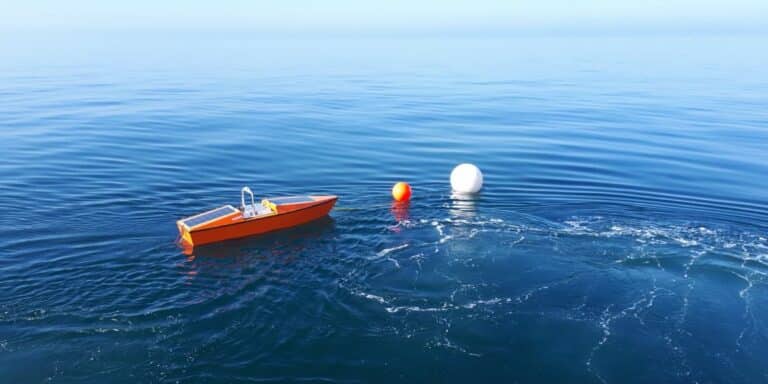
In the planning and development of offshore projects, environmental impact plays a pivotal role, particularly during an era when the maritime industry is dedicated to minimizing its carbon footprint to fight against climate change and mitigating adverse effects on the environment and human well-being across air, land, and water.
Hence, the Environmental Impact Assessment (EIA) is crucial for most offshore projects because it can markedly affect not just the marine ecosystem (comprising wildlife and plant life) through water pollution and underwater noise. Above the water surface, they may affect air quality via greenhouse gas emissions, produce noise (particularly from wind turbine blades), and result in visible consequences.
EIA involves the identification and in-depth evaluation of the project’s consequences on all these aspects, with a focus on implementing measures to minimize or manage them in compliance with regulations and standards. In this regard, EIA encompasses a variety of studies, depending on the specific requirements pertaining to each type of project.
- Seabed surveys (geotechnical study): analysis of the seabed composition and properties to determine the feasibility of installing the foundations of the offshore structures and ensure that they are stable. It also aims at measuring the benthic ecosystems.
- Oceanography and hydrodynamics: studies on the physical and biological characteristics of the underwater environment (currents, tides, and sediment transport).
- Bird and bat studies: assessments to understand how the offshore wind turbines might affect bird and bat populations. This includes studies of migration patterns, nesting sites, and collision risk assessments.
- Marine mammal (cetaceans) impact assessment: examining how the wind farm might impact these mammals (studies on their behavior, migration routes, and potential disturbance from construction and operation activities).
- Fisheries and aquatic ecosystem studies: evaluation of how the project may affect local fish populations, habitats, and the overall aquatic ecosystem. This includes assessing potential changes in fish migration and spawning patterns.
- Passive acoustic monitoring is mandatory to protect marine life from harmful noise pollution, which can disrupt the migration, communication, and breeding patterns of various aquatic species. It also aids in enhancing resource management and in supporting responsible fishing practices. It concerns a wide spectrum of projects, including wind energy initiatives, and other renewable energy developments, as well as oil and gas projects involving drilling, extraction, and transportation.
- Cable route surveys: examining the seafloor and the marine environment to plan cable routes for transmitting electricity from the structure to the shore.
- Visual impact assessments: evaluation of how the wind turbines might affect the visual landscape from the shore and from the sea, affecting tourism and local communities.
- Cultural heritage and archeological studies.
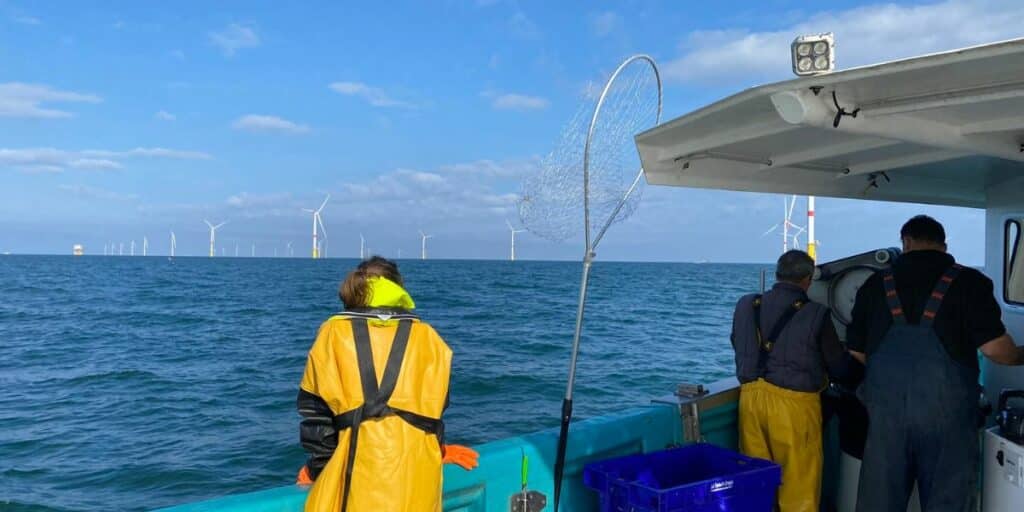
EIAs are conducted throughout every strategic phase of offshore projects, encompassing feasibility studies, construction, operation, and even the decommissioning stage. The ongoing monitoring of environmental repercussions, adherence to mitigation measures, and compliance with regulatory requirements are imperative.
During the feasibility study phase, the project manager establishes the project’s initial state. This initial state serves as a foundation for comparison with the reference state, commonly known as the “baseline.”
Throughout the project’s lifecycle, each parameter’s actual status is consistently compared to this reference state. This ongoing evaluation process facilitates the rapid identification of any discrepancies or deviations from the project’s original plan, enabling project managers to proactively address challenges, and make necessary adjustments or improvements.
A coordinated approach requiring a collaborative engagement
Given the extensive reach of these intakes and their multifaceted effects, numerous stakeholders play a vital role in their development beyond project promoters and developers. Local communities, energy companies, government agencies, and environmental groups often participate in or are consulted in the decision-making process concerning the utilization and conservation of these resources.
As an example, the Atlantic Outer Continental Shelf (OCS) refers to the submerged area and seabed located beyond the United States’ territorial waters in the Atlantic Ocean. The OCS extends from the coastline to a specific outer boundary, which is defined by the U.S. government. It is a region of interest for various activities, including energy exploration and production, fisheries, shipping, and environmental conservation.
The Atlantic OCS is known for its significance in offshore energy resources, particularly offshore oil and gas reserves, as well as for renewable energy sources like wind and tidal energy. It has been the focus of exploration and drilling efforts by energy companies.
The U.S. government, through the Bureau of Ocean Energy Management (BOEM), manages and regulates activities on the OCS, ensuring that they are conducted in an environmentally responsible and safe manner. The development of the Atlantic OCS involves a complex interplay of economic, environmental, and regulatory considerations.
Sinay’s range of solutions for EIA in offshore projects development
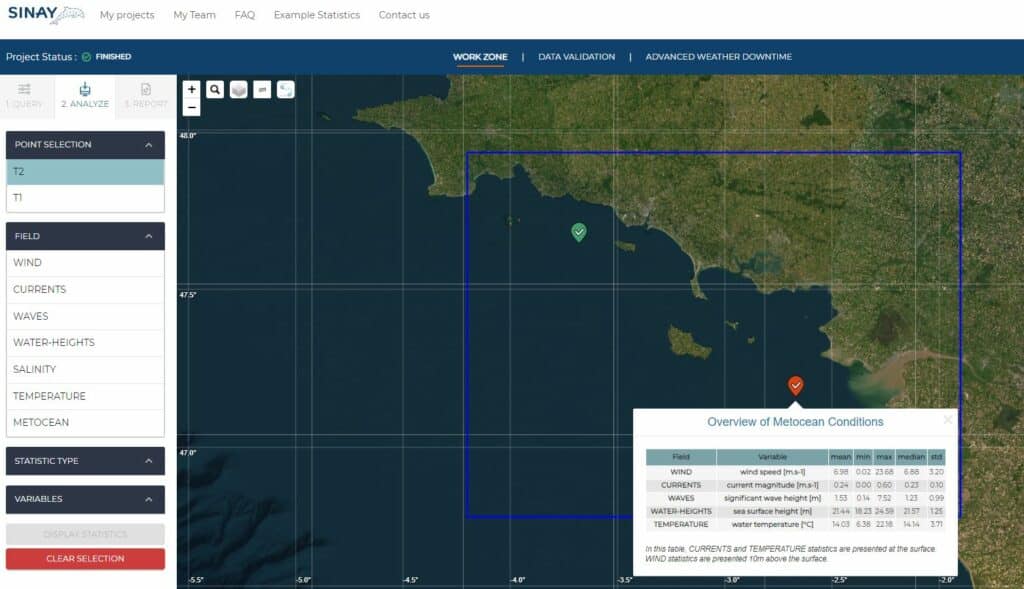
Sinay offers a comprehensive range of data-driven AI tools tailored for offshore businesses. These solutions, specifically designed for professionals across the entire maritime industry, are geared towards optimizing various offshore operations, thereby enhancing both efficiency and sustainability.
The hub encompasses customized metocean analysis tools, providing data on waves, wind, marine currents, and more. It also offers applications for monitoring ocean water and air quality, as well as assessing the impact of human activities on marine wildlife. In addition, there is a greenhouse gas (GHG) emissions calculator.
Maritime tech companies and developers can also leverage Sinay’s APIs to construct their own platforms, customized to meet their unique needs and constraints. A dedicated team of tech experts is responsible for the design and maintenance of these tailored tools.
Sinay has some specialization in environmental studies, check out our brochure to see which studies we can carry out.
The specific studies required at each phase of the offshore project
Feasibility studies phase
Not all offshore projects can be implemented anywhere under any circumstances. Their design process starts well in advance of the project’s initiation, and their impact endures long after the structure’s dismantling or the cessation of its operation.
The feasibility study plays a crucial role in evaluating the overall viability of a project. This entails a thorough examination of various factors, including the project’s location, resource needs, potential environmental impacts, and expected costs and benefits.
- Site assessment: preliminary site surveys are conducted to understand the geological, meteorological, and oceanographic conditions at the project site. This includes a geotechnical survey, to determine the foundation design for offshore structures based on the seabed conditions.
- Passive acoustic monitoring is vital for maritime safety and navigation, helping in the prevention of collisions and accidents, especially in busy offshore areas.
- Regulatory and permitting analysis: the project has to comply with some regulatory requirements, which include a request for specific permits.
- Preliminary cost estimation: estimate the budget required for the project.
- Risk assessment: it is essential to evaluate all risks that could disrupt the project’s operations and affect nearby communities. Strategies must be developed to effectively mitigate these risks.
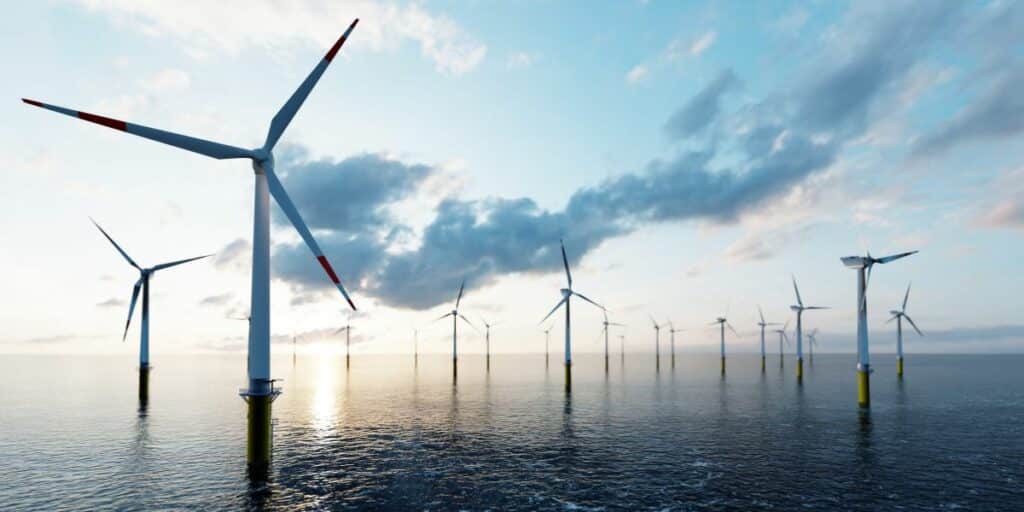
Conceptual design phase
Develop a high-level design of the project, considering the size, scope, and technical requirements.
- Engineering studies: they are required for designing the offshore facilities and structures, and ensuring that they can withstand the harsh marine environment, for example for floating offshore wind plants.
- Socioeconomic impact assessments: they aim at understanding how the offshore might affect the local economy, job creation, and the surrounding community well-being.
- Marine traffic studies, to evaluate the effects of the project on traffic patterns and safety.
Front-end engineering and design (FEED) phase
This phase is crucial as it consists of defining the project’s technical specifications, costs, and schedules.
- Detailed engineering studies: mechanical equipment and systems, including pressure vessels, pumps, compressors, and piping systems, stress and vibration analysis, control systems, process design and simulation…
- Civil and structural engineering: for the design of foundations, structural supports, and other civil engineering aspects, ensuring that they can withstand environmental loads and meet safety standards.
- Engineering for electrical systems, including power distribution, lighting, and instrumentation, is carried out.
- Safety and hazard analysis, such as hazard and operability (HAZOP) and safety integrity level (SIL) assessments, are conducted to identify and mitigate hazards.
- Permitting and regulatory compliance: begin the permitting process and ensure that the project complies with all relevant regulations.
- Material procurement planning: identify and plan for the materials and equipment needed for construction.
Construction phase
- Construction planning: develop a detailed construction plan and schedule.
- Quality control and inspection plans: implement quality control measures to ensure the project’s construction meets specifications.
- Safety plans: develop safety procedures and protocols for workers on site.
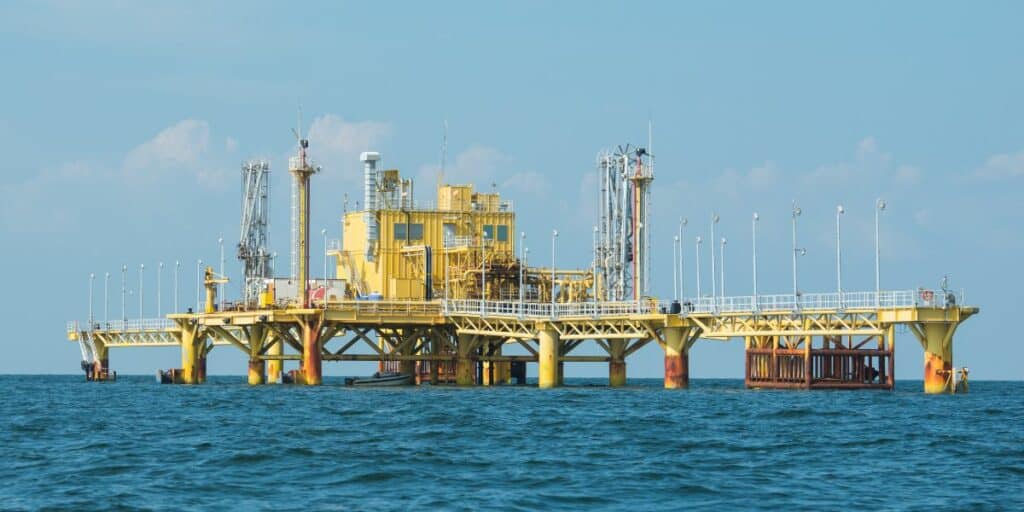
Operation and maintenance phase
- Operation and maintenance manuals: create manuals for the long-term operation and maintenance of the project.
- Monitoring and reporting: establish a system to monitor the performance of the offshore structures, whether they are wind turbines, oil rigs, or other facilities.
- Emergency response plan: develop a plan for responding to emergencies or incidents.
Decommissioning phase (if applicable)
When an offshore facility is intended to be removed after a specific number of years, project developers must carefully plan the decommissioning phase. This process is common in various industries such as energy, offshore oil and gas, nuclear power, and industrial sectors. Decommissioning is the systematic process of disassembling and removing equipment, structures, and materials associated with the facility. In the context of offshore oil and gas, this process often entails the extraction of oil rigs or platforms. In the case of nuclear power facilities, it may involve the controlled disassembly of reactors and their associated structures.
A decommissioning plan is necessary to take into account all safety, environmental, and regulatory considerations of this complex undertaking. It involves some specific studies:
- Environmental cleanup, to suppress effects or contamination resulting from the operation of the facility, such as soil and water remediation, removal of hazardous materials, and ensuring the site meets international or national environmental policies.
- Financial study: disassembling an offshore facility can be expensive, and it’s crucial to have financial arrangements in place to cover the costs of the entire process. In some industries, financial assurances or bonds are required to ensure funds are available for decommissioning when needed.
- Regulatory compliance study: developers must ensure that they adhere to all applicable laws, regulations, and permits throughout the decommissioning process.
Conclusion
The specific studies and phases can vary greatly depending on the type of offshore project. Regulatory requirements and environmental considerations will play a significant role in determining the studies required at each phase of an offshore project.
The comprehensive and thorough preparation of all required studies before initiating the construction and operational phases of offshore projects is crucial. It guarantees the successful and timely completion of such a project, which is complex and challenging in nature while mitigating the risks for developers. It also contributes to the safety and welfare of both the workforce and end-users of the new facilities, as well as the nearby communities.
Frequently Asked Questions About Studies in Offshore Operations
Environmental Impact Assessment (EIA) is crucial in evaluating the effects of offshore projects on marine ecosystems and surrounding environments.
It involves a range of studies such as seabed surveys, oceanography, wildlife impact assessments, and acoustic monitoring to minimize adverse impacts in compliance with regulations.
Feasibility studies involve site assessments, risk evaluations, passive acoustic monitoring, regulatory analysis, and cost estimation to assess project viability, potential risks, and regulatory compliance.
In the construction phase, studies cover construction planning, quality control, safety protocols, and inspection plans ensuring adherence to project specifications and safety standards.
During decommissioning, studies involve environmental cleanup, financial assessments, and regulatory compliance planning to ensure safe disassembly and removal of offshore structures while meeting environmental policies and financial obligations.
Focus on data to make effective decisions
Discover our modules
Environmental Monitoring
Monitor air quality in real-time, be alerted when a threshold is reached & easily comply with regulation thanks to the automated reports.
Monitor water quality in real-time, predict and avoid water pollution & comply with regulations thanks to the automated reports.
Deliver a preliminary metocean analysis and the associated report in jut a few minutes.
You may also be interested by those others environment application :

